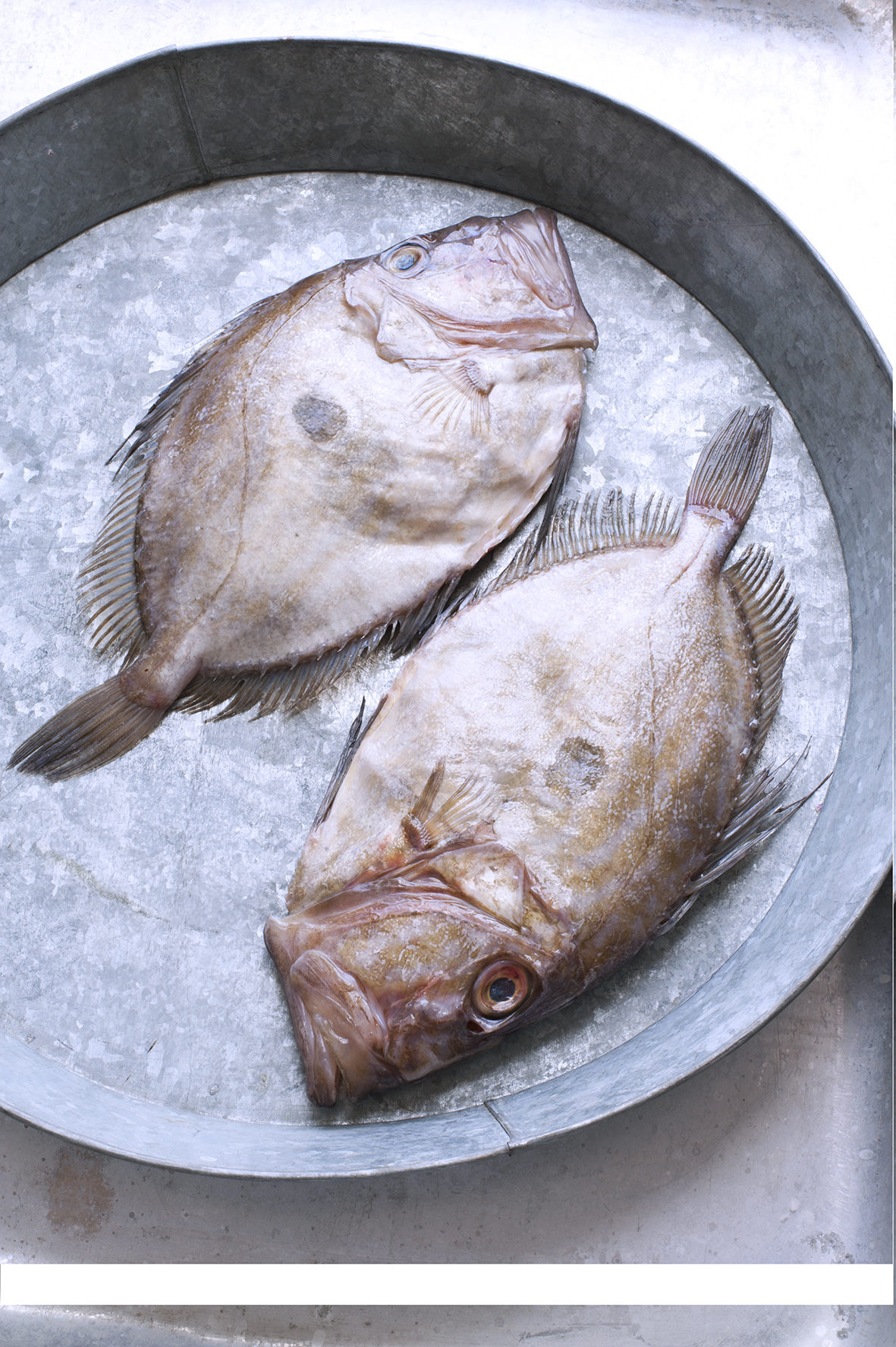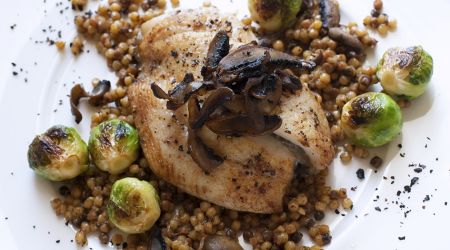John Dory -
As delicious to eat as it is ferocious to look at, every contemporary cook should have a ‘St Peter’s fish’ recipe up their sleeve, says Clarissa Hyman
I've heard of a fish called Wanda but one that answers to the name of John somehow sounds less cool. Especially when you find it also goes by another drab alias: Peter. Would a more outré name not be appropriate for such a slippery creature with lethal-looking, Mohican punk spikes on a big, bulbous head? How can we not instinctively be drawn to its bizarre, flat and oval shape and weird flapping fins? Or its googly eyes that provide binocular vision and depth perception? And, especially, how can we account for the distinctive dark thumbprint beauty spot on each side of its body? It’s all rather threatening. Perhaps it’s the recidivist fish equivalent of ankle tagging. I’ve always loved a bad boy.
The John Dory is a voracious, lonely hunter: it rarely hangs out with other fish, preferring to eat them instead. Although they are poor swimmers, their monstrous, extendable tube-like mouths can shoot out to suck in large items of food such as sardines, squid and shrimp. It looks like a flat fish stuck edgeways up and its profile is so fine it is said to be able to hide itself from its prey simply by appearing thin. The fish indeed is so unappealing it used to be called l’horrible in parts of France but the unfortunate moniker and menacing appearance should not deter anyone from eating this exceptionally delicious fish. Think of it instead by its scientific Latin name, Zeus faber, named after the King of the Gods. Much more Game of Thrones.
The origin of the outsize black spots encircled with a gold band has been attributed to the touch of St Peter, who picked the fish up from the Sea of Galilee but then, instead of keeping it, returned it to the water – hence the alternative name of ‘Saint Peter’s fish’. Some call it Christopher after another solitary saint. The marks are in fact thought to be a defensive measure, used to confuse predators by fooling them into thinking they are looking at the eye and head of a much larger fish, giving the John Dory an opportunity to escape. Talk about giving the ‘evil eye’.
How the John Dory name came about is also unclear. The most common explanation is that it derives from its French nickname, jaune doré, meaning ‘golden yellow’, although the colourful sheen fades fast once the fish is out of the water. Another, rather more tortuous theory, as recounted in the novel An Antarctic Mystery by Jules Verne, contends it comes from the Spanish janitore, because St Peter was the ‘janitor’ or ‘porter’ of heaven.
Fish expert Alan Davidson offers a typically erudite possibility that suggests the 18th-century actor and epicure James Quin was responsible for promoting the popularity of the fish to the extent it became known as ‘John’s Dory’. A later source quoted by Davidson inclined to the view John is a nickname like Jack in jackdaw. It remains a mystery.
The fish swims in the Mediterranean, the Moroccan Atlantic coast and the Bay of Biscay and, less often, north of the English Channel and Ireland. A demersal fish, it is found in depths ranging from a few metres to several hundred deep. Down under, a virtual New Zealand lookalike is known by the Maoris as kuparu: they gave some, pickled in casks, to Captain Cook on his first voyage there in 1769.
A relatively abundant species in Cornish waters, it is usually caught as a valuable by-catch in trawl and net fisheries. While there is no evidence that numbers are decreasing, it is a species with a relatively high vulnerability to overfishing. As the Cornwall Good Seafood Guide notes, due to their strange shape young John Dory are easily caught in fishing gear and cannot easily escape through mesh or escape gaps. They advise avoiding eating fish smaller than 29cm as they will not yet have had the opportunity to spawn.
The task of filleting a whole fish needs scrupulous care as the porcupine-like barbs are extremely sharp: best trim them off with scissors first and keep the first aid box close at hand. However, whether done at home or by the fishmonger, it yields good, white fillets that can generally be treated like sole or plaice with firm flesh and a delicate sweet and mild flavour.
The fillet-to-fish-size ratio is most uneven, and there seems a lot of waste for little fillet, but the bones make wonderful stock. The aforementioned Quin, who was described as possessing a ‘voluptuous palate’, recommended poaching the fish in sea water and serving it with lobster or shrimp sauce. Cookery writer Eliza Acton noted in Modern Cookery for Private Families (1845) that John Dory, ‘though of uninviting appearance is considered by some persons as the most delicious fish that appears at table’.
The fillets are also suitable for poaching, pan-frying and grilling. A Devonshire recipe quoted by Davidson is enriched with cider and cream, but the fish also stands up well to punchy Mediterranean flavours and peppery sauces, especially as the flesh does not fall apart when cooked: Russell Norman, for example, serves it with courgette shoestring fries, Tom Aikens with turnips and chestnuts and Atul Kochhar with green spice paste and warm apple salad. It is also a marvellous inclusion in a classic bouillabaisse.
When David Beckham took his son Brooklyn for his first sea-fishing trip a few years ago, they caught a whopping John Dory, and posed in triumph for the cameras. It was as ugly as sin, but a beautiful moment. Back of the net, guys!

Recipes
Get Premium access to all the latest content online
Subscribe and view full print editions online... Subscribe




